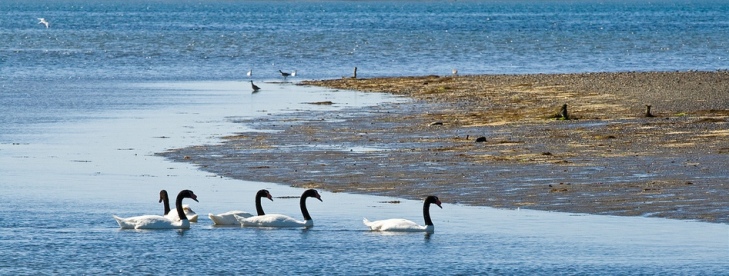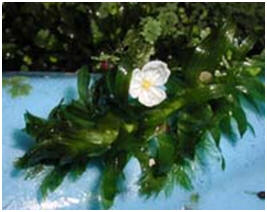Nutrition-You are what you eat!
As mentioned in the habitat
section, black-necked swans live in regions adjacent to water,
feeding on aquatic plants, insects, and some fish spawn.
This diet classifies them as omnivores, feeding on both
heterotrophic and autotrophic organisms.
Swans most commonly feed on aquatic plants such as Brazilian
waterweed, stonewort, and pondweed.
Besides having legs specialized for swimming, they also have
jagged edged bills that allow them to filter food from the water.
Their rough tongue is another
adaptation that allows them to grasp slippery plant matter.
Swans, like other chordates, have a complete digestive tract
that includes a mouth, esophagus, stomach, small intestine, large
intestine, rectum, and anus.
The digestive tract also includes organs such as the pancreas
and liver, which aid in digestion though secretions such as bile.
As is typical in most omnivores, the intestines are elongated
to aid in absorption of as many nutrients as possible. As a group,
swans have a low ability to digest and absorb nutrients from the
plant matter they eat.
Due
to high levels of cellulose and fiber,
swans are able to digest only 21-34% of the plant matter they ingest
.
This characteristic limits them, forcing swans to devote much
of their time to eating in order to receive proper nutrition.
Swans have a closed circulatory system, meaning blood is
contained within vessels and there is separation between the blood
and interstitial fluid.
Their four chambered heart pumps oxygenated blood out to the
tissues, while deoxygenated blood returns to the heart to be
exchanged by the lungs.
 |
|
| Stonewart, a common meal for this swan. | Brazilian waterweed, another tasty dish! |

